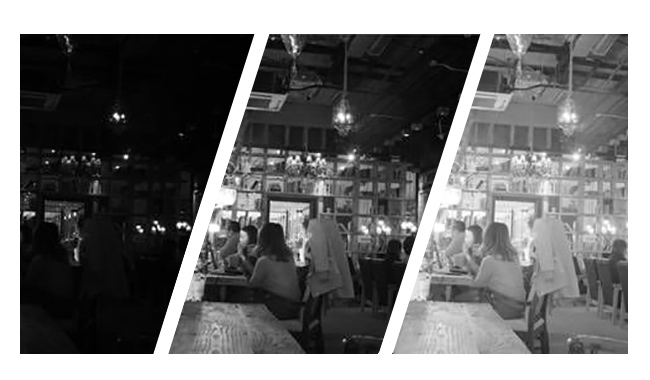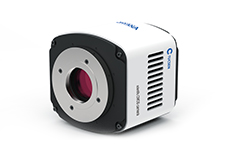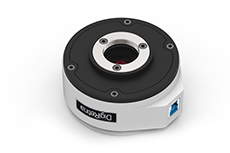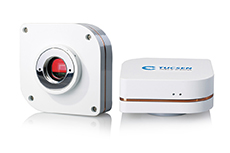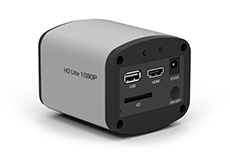Tucsen releases the flagship of the Dhyana series scientific CMOS (sCMOS) cameras: Dhyana 95, which represents a significant breakthrough in advanced imaging technology. Featuring an all-new back-illuminated CMOS sensor, the Dhyana 95 delivers extraordinarily high quantum efficiency, making it the most sensitive life science sCMOS camera in the world. Dhyana 95 has the advantages of extremely low noise, high dynamic range, high frame rate and so on. It is well suited for ultra-low light detection, high dynamic range and high speed imaging applications, providing solutions for machine vision, life science, astronomy, etc.
The world's only 95% QE scientific CMOS sensor
This increase in quantum efficiency over existing sensors further improves the absolute response threshold of Dhyana 95 to 1.3 photons, making it the most sensitive sCMOS cameras in the world. The Dhyana 95 has a powerful capacity for photon counting.
1.45e- Low Read Noise
With superb large pixel size 11µm×11µm, the Dhyana 95 exhibits 1.45e- read noise. Regarding the read noise per unit area of each pixel, the Dhyana 95 has the lowest noise of all the CCD and sCMOS cameras in the market. The Dhyana 95 offers truly extraordinary signal-to-noise ratio.
90,000e¯ Full Well Capacity, High Dynamic Range
86 dB dynamic range and 16 bit digital output, enables ultra-low signals and strong signals to be captured simultaneously.
-10° Cooling, Low Dark Current
Through thermoelectric cooling, the dark current of Dhyana 95 at -10℃ is lower than 1.5e-/pixel/s. By the high vacuum sealing design, a lower and more stable cooled temperature is achieved.
High Frame Speed
By using the USB3.0 data transfer interface, the frame rate reaches 24fps at 2048 x 2048 resolution. The Dhyana 95 has the capability to capture images of fast-moving objects.
Back-illuminated chip technology
Tucsen uses the world's leading back illuminated sCMOS technology, which, when compared with the traditional sCMOS technology, greatly improves the light capture efficiency.
Technical Features
| Sensor
size |
2" |
| Sensor model |
G400 BSI |
| Color/monochrome |
Monochrome |
| Quantum
efficency |
95% @ 560nm |
| Imaging device |
Back-illuminated sCMOS |
| Effective no.
of pixels |
2048(H)x2044(V) |
| Pixel size |
11μm x 11μm |
| Effective area |
22.528mm x 22.528mm |
| Full well
capacity |
90,000e- |
| Frame rate |
24fps@full resolution |
| Read noise |
1.45e- |
| Shutter type |
Rolling Shutter |
| Scan mode |
Progressive |
| Exposure mode |
Manual |
| Exposure time |
0.02ms-10s |
| Cooling method |
Peltier cooling |
| Cooling
temperature |
Forced air(Ambient at
+25℃):-10 ℃ |
| Dark current |
3 electrons/pixel/s(0
℃)(typ.) |
| |
1.5
electrons/pixel/s(-10 ℃)(typ.) |
| Dynamic range |
86dB |
| Sub-array |
Available |
| External
trigger mode |
Standard trigger,
Synchronous trigger, Global trigger |
| External
trigger signal routing |
HIROSE connecter |
| Trigger delay
function |
1ms - 10,000s |
| Trigger output |
3programable timing
output ( Exposure signal, Global signal, Readout signal ) |
| External
signal output routing |
HIROSE connecter |
| Digital
interface |
USB3.0 |
| Software
interface |
TU-SDK |
| A/D converter |
16 bit |
| Lens mount |
T-mount |
| Power supply |
12V/8A |
| power
consumption |
50W |
| Parameter
settings |
White balance,
Exposure, 3D denoise, Gamma, Gain, Contrast, Saturation, Flat fielding, Auto
level |
| PC software |
Mosaic/LabVIEW/Matlab/Micromanager |
| Compatible
system |
Window/Linux/Mac |
| Operating
temperature |
0-60℃ |
| Operating
humidity |
45%-85% |
.jpg)
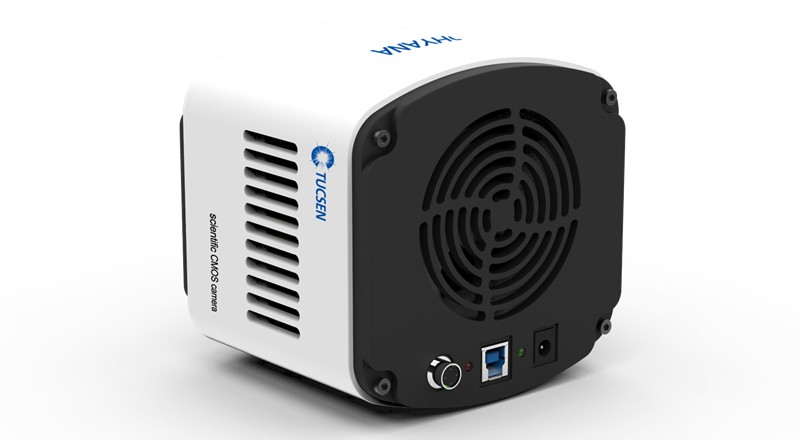

(1).jpg)



